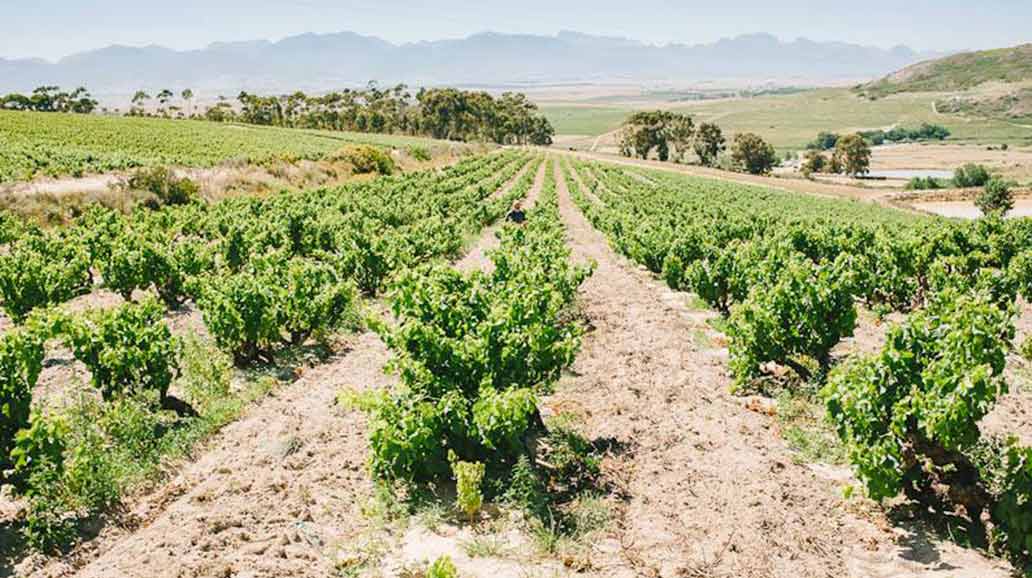Author: Brittany Hawkins
If you follow the wine trends, old vine wines are all the hubbub in the South African wine industry. Most likely, you’ve seen the likes of “Old Vine Chenin” featured on a label here and there, but what about old vines really makes it better? In a nutshell, the older a vine is, the more established it becomes. The result is a better established root system, a vine in balance and better quality of fruit. The wine itself becoming a truer expression of the vineyard site specifically and better quality in general.

What makes it an ‘old vine?’
- Vines that are 35 years of age or older – International generally accepted minimum age.
- The majority of ‘old vines’ are bush vines, meaning that they aren’t trellised and often resemble small (sometimes big) bushes that are close to the ground.
- They are often unirrigated, which means that the roots must dig deeper into the soil in search of water. The theory behind dry land farming is that established root systems, well adapted to the landscape they are planted in, translates into a sense of brilliance, unique texture and complexity in the wine therefore truer expression of terroir.
- In South Africa, most old vine wines are made from Chenin blanc but it can be any variety. South Africa has 39 varieties on its list of old vineyards. The biggest variety is Chenin blanc at 52%, with Cinsault and Pinotage at 5%, Palomino at 4% and Sauvignon blanc, Semillon, Shiraz and Tinta Barocca next in the rankings.
How did old vines get here?
To understand “old vines,” it’s important to understand the typical/historical aspect of how grape vines are farmed. Back in the day, the SA wine industry was focused on growing grapes in volume for the Co-Operative market (primarily the KWV in the beginning), as well as for brandy production and for financially minded farmers, that meant cultivating vineyards that generate the highest yield per vine. The typical lifespan of a commercial vine in South Africa is about 15-20 years old, after which the yield (volume of grapes) declines and farmers replace them with younger, more vigorous vines.
But when the wine industry started struggling and farmers started planting other, more financially viable crops, they neglected many of the ageing grape vines.
It’s with this important historical background that the rags to riches story begins. Things began to change in the 90’s when self-trained viticulturist and ex-lawyer, Rosa Kruger, discovered the depth, elegance and complexity of wines made from old vines during her extensive travels overseas. With great excitement, she began a viticultural treasure hunt, backed by Mr Johann Rupert which lead her down a path of vinous discovery. She geographically researched and established the availability of old vines and the viability of an Old Vines wine series at L’Ormarins. She moved to Riebeek-Kasteel in South Africa’s scorching Swartland region and discovered more of these forgotten, neglected vines. She found incredible Chenin Blanc bush vines and old, (amongst other varieties) gnarled Semillon vineyards planted in ancient soils, which she later shared with her friend, winemaker Eben Sadie.
Eben’s innovative “Old Vine Series” wines were an immediate hit and garnered international notoriety. Rosa found herself getting calls from many local vineyard owners all trying to sell off their grapes from “underperforming” vines, while winemakers on the other hand were chasing her down for the scarce fruit from vines in “secret” locations . Whilst there was a growing intrigue around these old vines, they were still cheaper than most other grapes on the market. This changed quickly as the grapes are so sought after but mainly because for the grower to keep the vines in the ground, the price per ton has to be at a sustainable level. The latter is also one of the main objectives of the Old Vine Project, in order to keep the old vines preserved long term.
Just as many counter culture trends form, this new composition of factors facilitated by Rosa allowed a whole new type of winemaker to emerge. While wineries like Boekenhoutskloof, Kaapzicht, Kanonkop and Ken Forrester have been making wines from old vines for a while already, rebellious and creative winemakers uninterested in working for the proverbial “man” or the established South African wine industry gained access to these gems and were able to apply an artistic approach in order to make innovative old vine wines. Whether or not they knew it, winemakers (initially) at L’Ormarins and then Eben Sadie, Adi Badenhorst, Chris Alheit, Andrea & Chris Mullineux and others were leading the way to raising the image of South African wines locally, but especially internationally.



Do old vine wines taste different?
Yes. This has to do with the age and the orientation of the vines. As a vine ages and the size of its grape clusters decrease, the vine can channel all its energy towards these bunches thus improving quality and complexity. The winemakers leading the charge on this concept argue that this equates to more densely flavourful and complex flavours that are on par with the finest wines from the oldest vineyards in the world.
Old Vines = The Endangered species of the South African wine world
Regardless of the excitement and international notoriety around these vines, they are still in danger of being pulled out by farmers because the return on investment is less than they might get with a different crop. To fight this, Rosa Kruger has developed a non-profit organization called the Old Vine Project, which maps out all the old vine heritage vineyards in South Africa. This has been a labour of love for over a decade and is being carried on by Andre Morgenthal and Viticulturist Jaco Engelbrecht with financial support from the Rupert Foundation.
